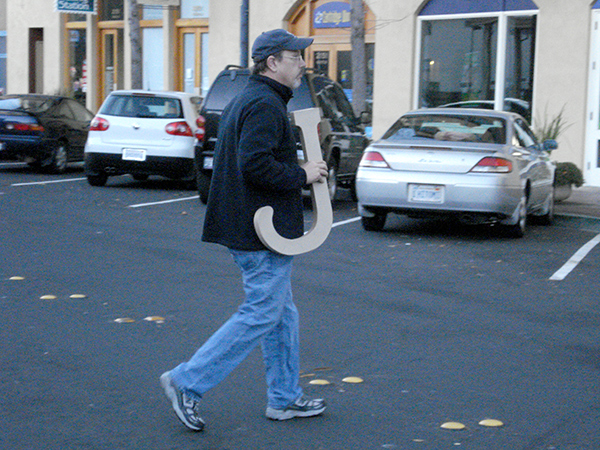Traffic-Related Typography Thing #1
Sometimes life dishes out serendipitous moments like it’s an all-you-can-eat buffet. One moment you’re sitting at a stop light, idling both mechanically and mentally, and you notice out of the corner of your eye something slightly askew—a thing out of place, context, space and/or time. Or in this case just a weird-ass traffic sign.
So it was on my way back from Costco, when this caught my eye…
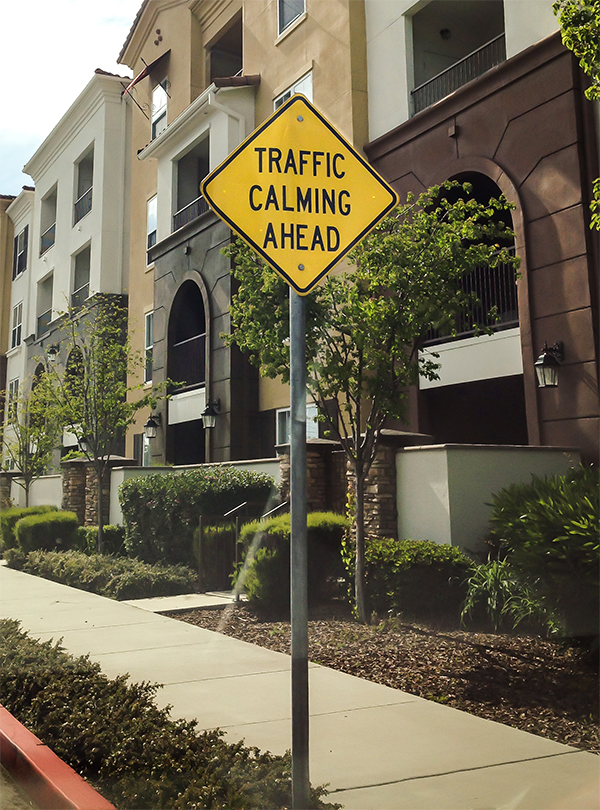
I love this and I don’t know why. It’s utilitarian yet transcendental. A perfect example of anomalous environmental design. A public “work” of art that asks as many questions as it pretends to answer. It warns, yet reassures. Honestly, I’m not even sure what the hell it means—is it warning me that traffic ahead is in fact calmer than the traffic behind? Or is it a veiled invitation to keep driving because traffic-related stress reduction awaits? I don’t really care. I just have to applaud not only the enlightened civil servant who wrote the copy for this sign, but his or her boss who had to approve it.
So I circled back and made this photograph and on the way home mused about what would happen if the City ran with this whole new “touchy feely” traffic sign idea. Here are some outcomes…
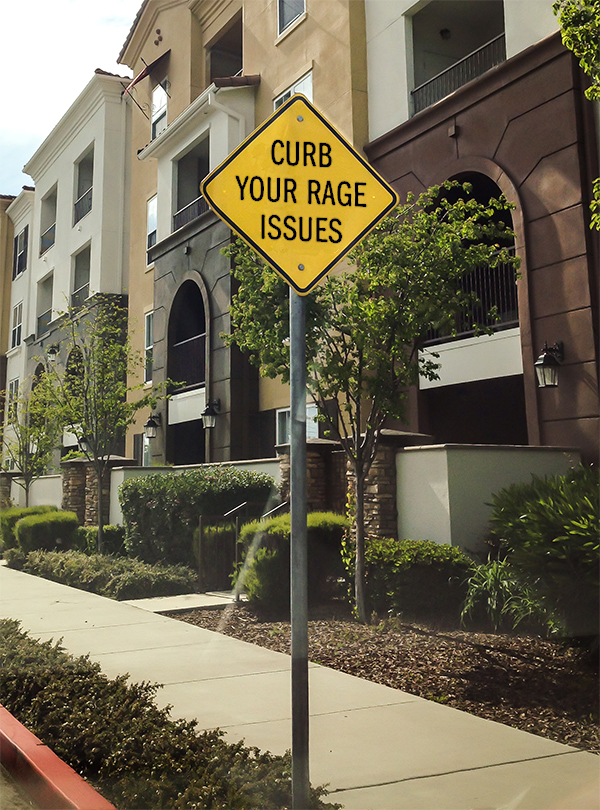
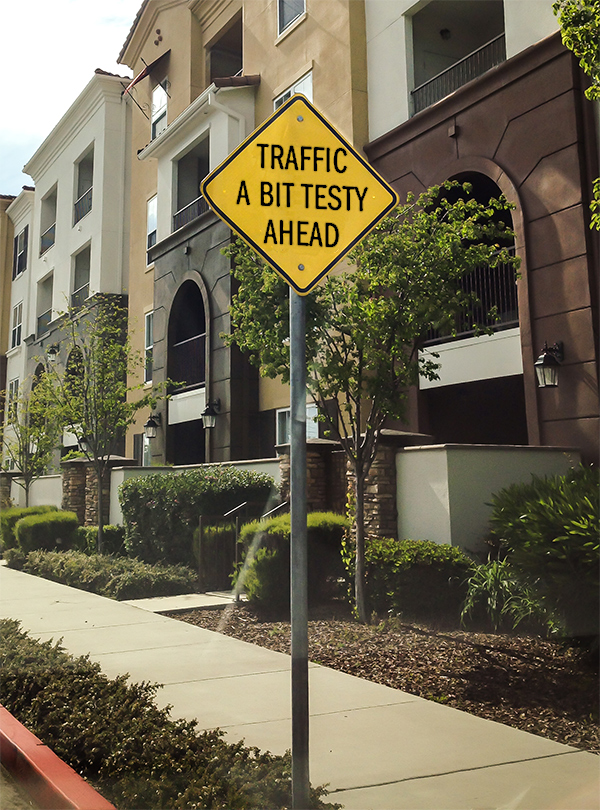
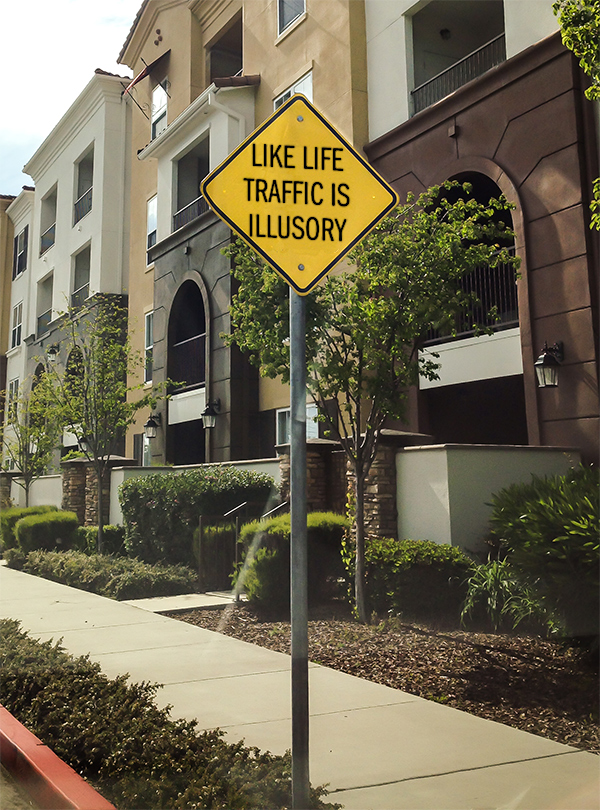
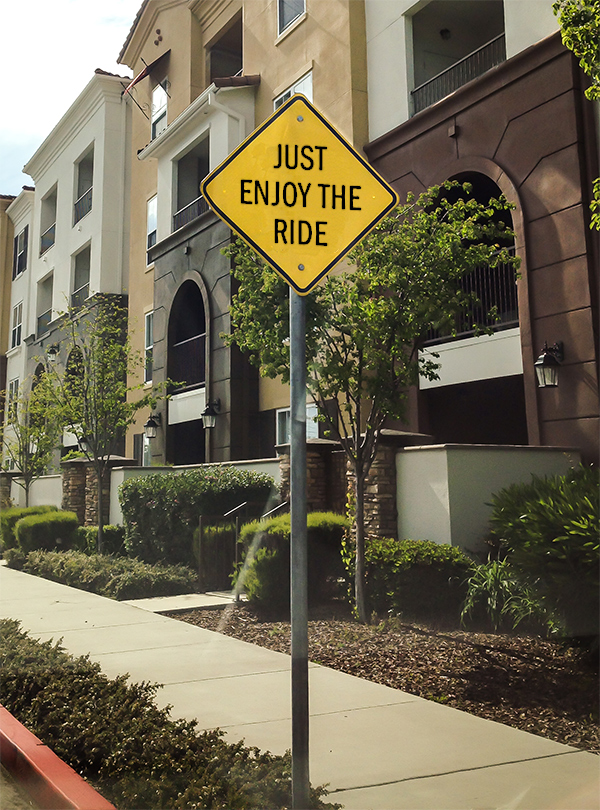
Late breaking news: Traffic calming is a real thing! If I’d done my research before writing this post I would have uncovered about a million Google search results, and a whole Wikipedia entry devoted to “traffic calming”. Who knew? Not me apparently. Moral of the story…I should get out more. But I still love it. Thanks to the psych major with the minor in traffic engineering who came up with the idea.
Traffic-Related Typography Thing #2
So some years ago (easily dateable by the “dad” jeans) I bought a really big paper mache “J”. My intention was to do something clever with it and give it to my niece Jessica for Christmas. On the way home I abruptly asked my wife to stop the car so she could photograph me walking across the street, not in the crosswalk, carrying the “J”. I avoided getting a citation and the rest is typographic history.
